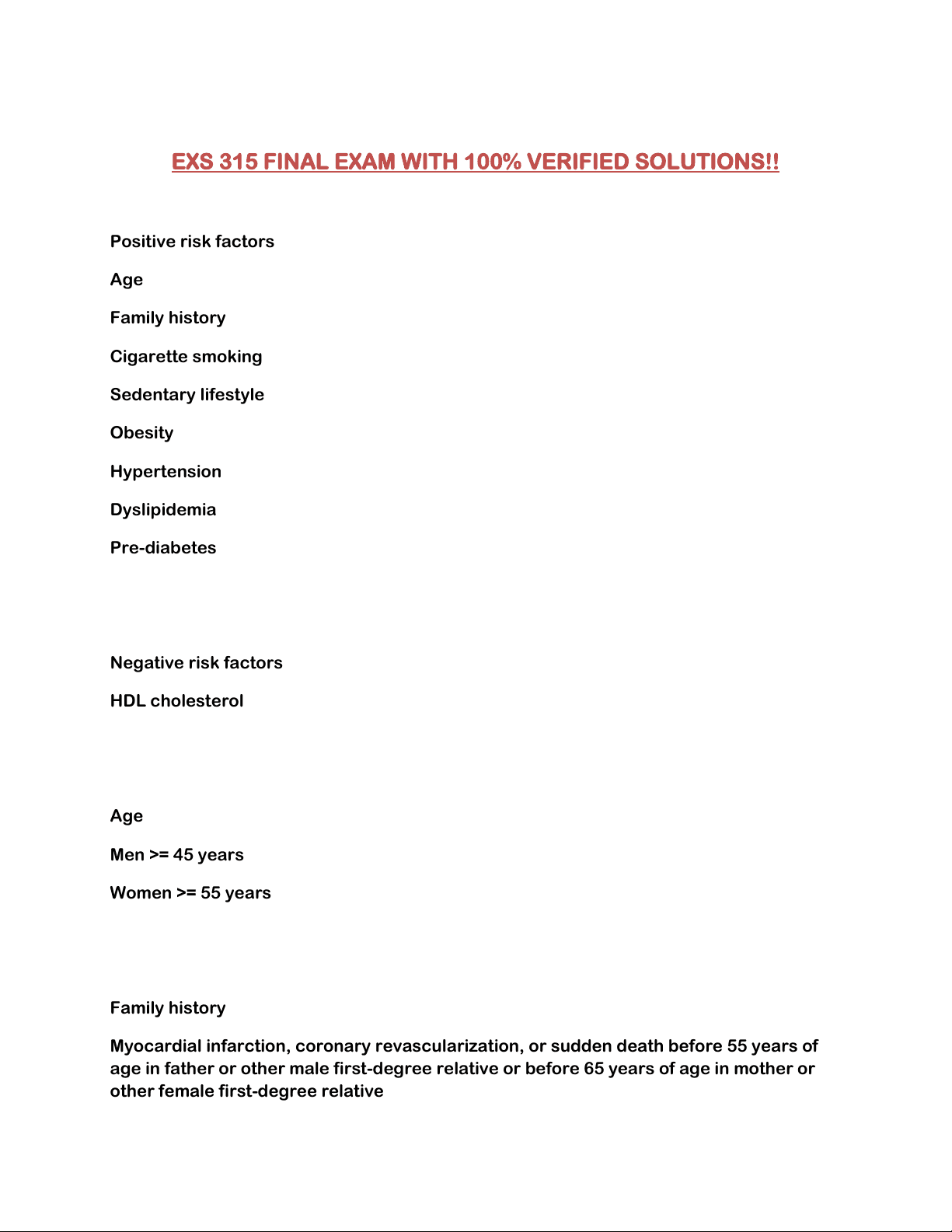
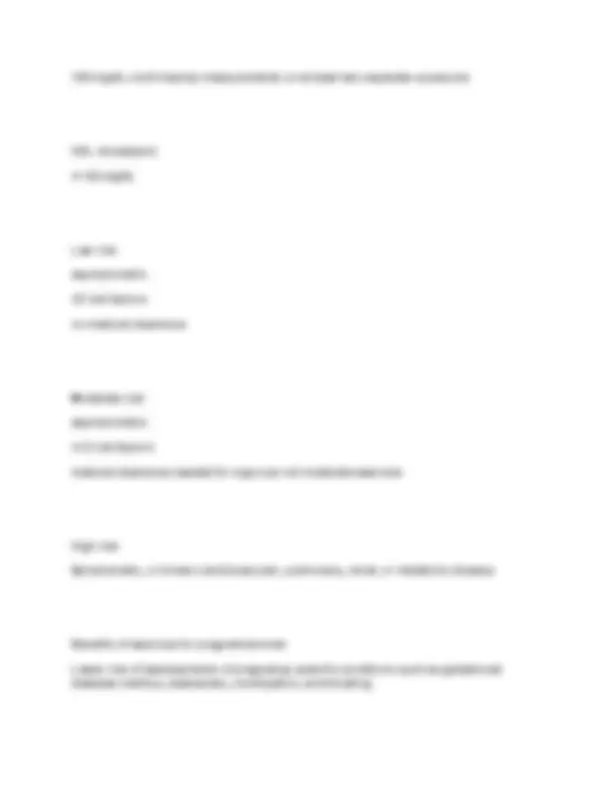
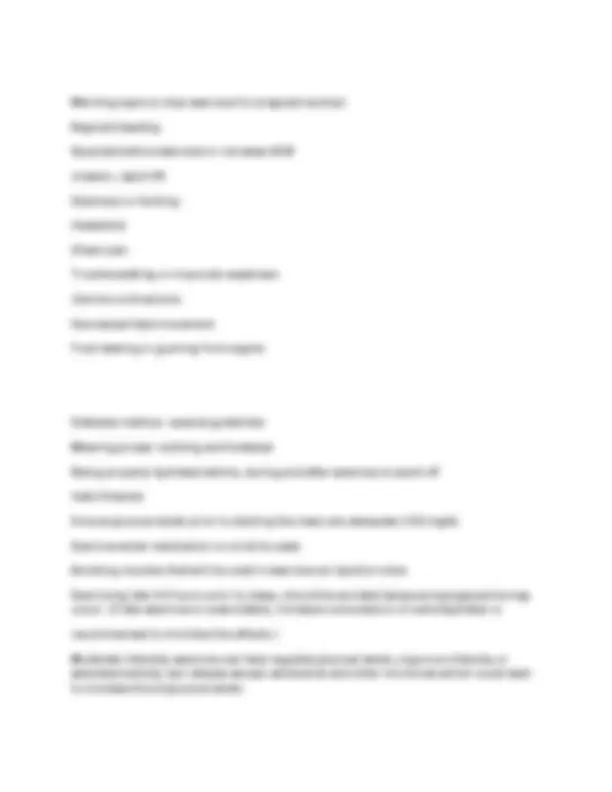
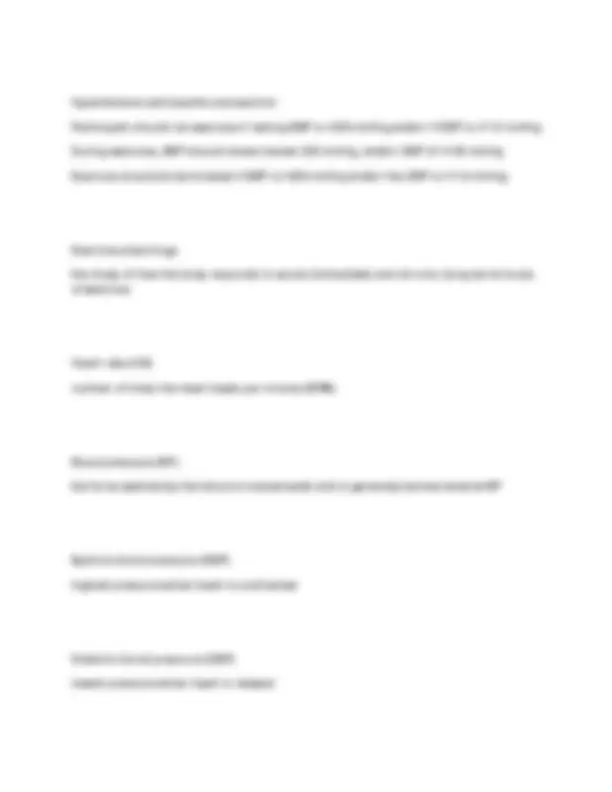
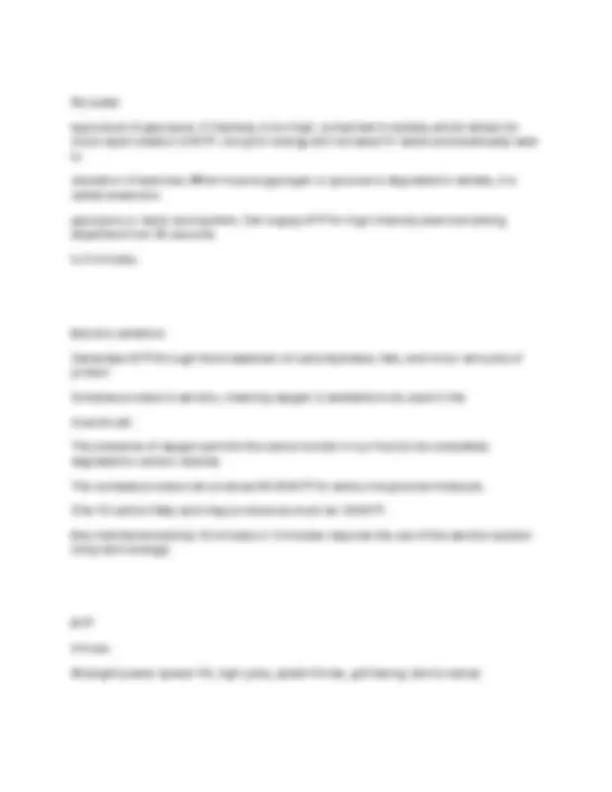
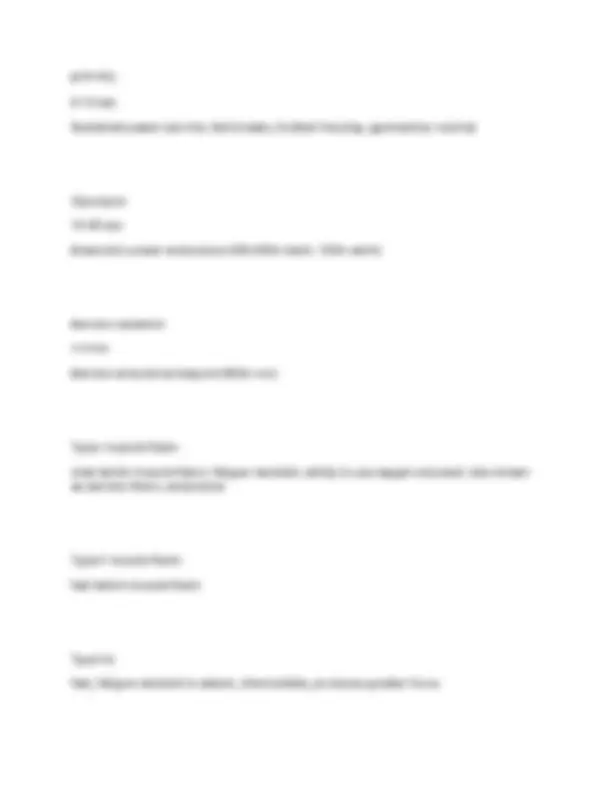
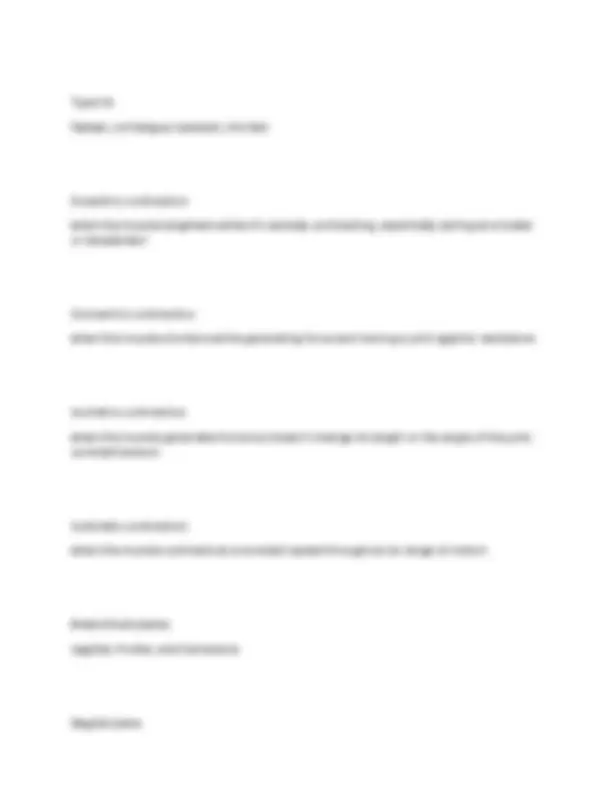
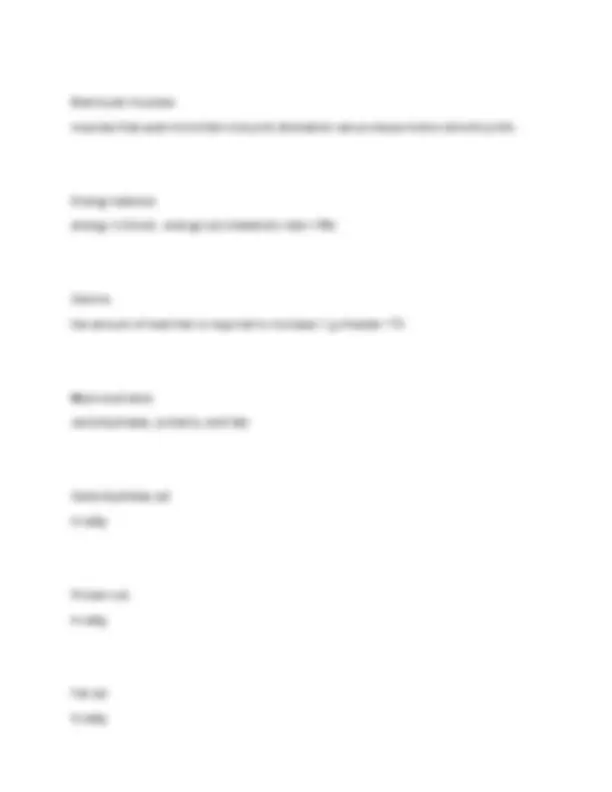

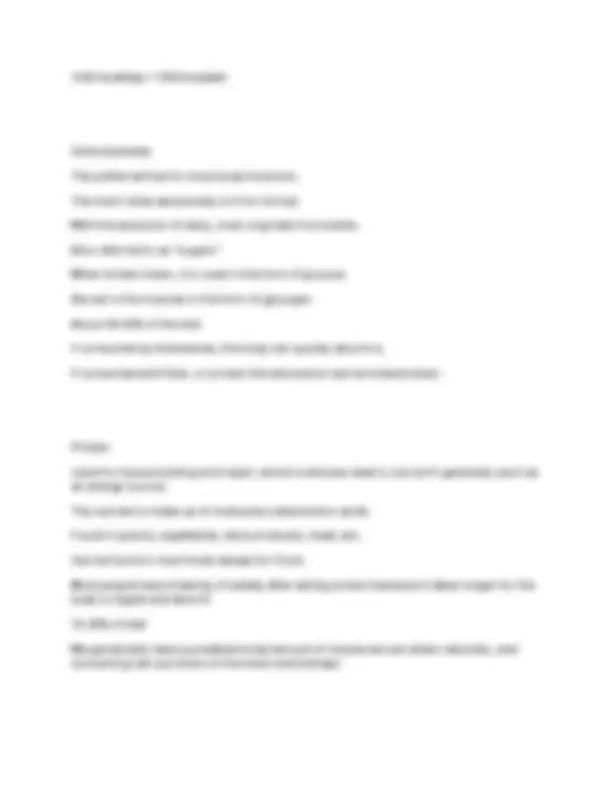


Study with the several resources on Docsity

Earn points by helping other students or get them with a premium plan


Prepare for your exams
Study with the several resources on Docsity

Earn points to download
Earn points by helping other students or get them with a premium plan
Community
Ask the community for help and clear up your study doubts
Discover the best universities in your country according to Docsity users
Free resources
Download our free guides on studying techniques, anxiety management strategies, and thesis advice from Docsity tutors
EXS 315 FINAL EXAM WITH 100% VERIFIED SOLUTIONS!!
Typology: Exams
1 / 16

This page cannot be seen from the preview
Don't miss anything!










Positive risk factors Age Family history Cigarette smoking Sedentary lifestyle Obesity Hypertension Dyslipidemia Pre-diabetes
Negative risk factors HDL cholesterol
Age Men >= 45 years Women >= 55 years
Family history Myocardial infarction, coronary revascularization, or sudden death before 55 years of age in father or other male first-degree relative or before 65 years of age in mother or other female first-degree relative
Cigarette smoking Current cigarette smoker or those who quit within the previous 6 months or exposure to environmental tobacco smoke (secondhand smoke)
Sedentary lifestyle Not participating in at least 30 minutes of moderate intensity physical activity (40-60% vo2r) on at least 3 days of the week for at least 3 months
Obesity Body mass index >= 30 or waist girth > 40 inches for men and >35 inches for woman
Hypertension Systolic blood pressure >=140 mmHg and/or diastolic blood pressure >= 90 mmHg, confirmed by measurements on at least two separate occasions, or currently on antihypertensive medications
Dyslipidemia Low-density lipoprotein (LDL) cholesterol >= 130 mg/dL or high-density lipoprotein (HDL) cholesterol <40 mg/dL or on a lipid-lowering medication; if total serum cholesterol is all that is available, use serum cholesterol >= 200 mg/dL
Pre-diabetes Fasting plasma glucose >= 100 mg/dL but <= 125 mg/dL or impaired glucose tolerance (IGT) where a 2 hour oral glucose tolerance test (OGTT) value is >= 140 mg/dL but <=
Warning signs to stop exercise for pregnant women Vaginal bleeding Dyspnea before exercise or increase SOB Uneven, rapid HR Dizziness or fainting Headache Chest pain Trouble walking or muscular weakness Uterine contractions Decreased fetal movement Fluid leaking or gushing from vagina
Diabetes mellitus: special guidelines Wearing proper clothing and footwear Being properly hydrated before, during and after exercise to ward off heat illnesses Ensure glucose levels prior to starting the class are adequate (100 mg/dL Exercise when medication is not at its peak Avoiding muscles that will be used in exercise as injection sites. Exercising late 4-6 hours prior to sleep, should be avoided because hypoglycemia may occur. (If late exercise is unavoidable, increase consumption of carbohydrates is recommended to minimize the effects.) Moderate intensity exercise can help regulate glucose levels, vigorous intensity or extended activity can release excess adrenaline and other hormones which could lead to increase blood glucose levels.
Hypertensive participants precautions Participant should not exercise if resting SBP is >200 mmHg and/or if DBP is >110 mmHg During exercise, SBP should remain below 220 mmHg, and/or DBP of <105 mmHg Exercise should be terminated if SBP is >250 mmHg and/or the DBP is >115 mmHg.
Exercise physiology the study of how the body responds to acute (immediate) and chronic (long-term) bouts of exercise
Heart rate (HR) number of times the heart beats per minute (BPM)
Blood pressure (BP) the force exerted by the blood on vessel walls and is generally termed arterial BP
Systolic blood pressure (SBP) highest pressure when heart is contracted
Diastolic blood pressure (DBP) lowest pressure when heart is relaxed
Respiratory system delivers oxygen and removes carbon dioxide using small air sacs in the lungs called alveoli; also serves as a filter to remove foreign particles from the air before reaching the lungs
Upper respiratory tract includes nose, nasal cavity, pharynx, and larynx; inhaled air is warmed to body temperature, humidified, and cleaned by these structures before being conducted into the lower respiratory tract
Lower respiratory tract includes the trachea, bronchi, and the lungs
Creatine phosphate (CP) donates a high-energy phosphate from CP to regenerate ATP form adenosine diphosphate (ADP); Simplest of the energy systems, only requires a one-step chemical reaction using the enzyme creatine kinase; The body stores about 3-5 times more CP than ATP, which can provide 10-30 seconds of all out effort
Anaerobic glycolysis breakdown of carbohydrate using a series of complex chemical reactions; Stored carbohydrates in the form of muscle glycogen or glucose in the blood are capable of rapidly producing small amounts of energy (2-3 ATP) w/o oxygen
Pyruvate byproduct of glycolysis; If intensity is too high, converted to lactate, which allows for more rapid creation of ATP; Using for energy will increase H+ levels and eventually lead to cessation of exercise; When muscle glycogen or glucose is degraded to lactate, it is called anaerobic glycolysis or lactic acid system; Can supply ATP for high intensity exercise lasting anywhere from 30 seconds to 2 minutes.
Aerobic oxidation Generates ATP through the breakdown of carbohydrates, fats, and minor amounts of protein Complex process is aerobic, meaning oxygen is available to be used in the muscle cell. The presence of oxygen permits the carbon bonds in our food to be completely degraded to carbon dioxide. The complex process can produce 36-39 ATP for every one glucose molecule. One 16 carbon fatty acid may produce as much as 129 ATP. Any maintained activity >2 minutes or 3 minutes requires the use of the aerobic system (long term energy)
0-4 sec Strength-power (power lift, high jump, javelin throw, golf swing, tennis serve)
Type IIb fastest, not fatigue resistant, tire fast
Eccentric contraction when the muscle lengthens while it's actively contracting, essentially acting as a brake or decelerator
Concentric contraction when the muscle shortens while generating force and moving a joint against resistance
Isometric contraction when the muscle generates force but doesn't change its length or the angle of the joint; constant tension
Isokinetic contraction when the muscle contracts at a constant speed throughout its range of motion
Anatomical planes sagittal, frontal, and transverse
Sagital plane
divides the body into left and right halves
Frontal (coronal) plane anterior and posterior halves (front and back)
Transverse (cross-sectional) plane superior and inferior halves
Planes of motion mediolateral axis, anteroposterior axis, longitudinal axis
Mediolateral axis perpendicular to sagittal plane
Anteroposterior axis perpendicular to frontal plane
Longitudinal axis perpendicular to transverse plane
Biarticular muscles muscles that span more than one joint; Activation can produce motion at both joints
Energy balance energy in (food) - energy out (metabolic rate + PA)
Calorie the amount of heat that is required to increase 1 g of water 1*C
Macronutrients carbohydrates, proteins, and fats
Carbohydrates cal 4 cal/g
Protein cal 4 cal/g
Fat cal 9 cal/g
Alcohol cal 7 cal/g
Safe goal for weight loss <= 2lbs/week
3500 kcal = 1 lb of fat
to gain/lose 0.5 lb/week 250 kcal/day = 1750 kcal/wk
to gain/lose 1 lb/week 500 kcal/day = 3500 kcal/wk
to gain/lose 1.5 lbs/week 750 kcal/day = 5250 kcal/wk
to gain/lose 2 lbs/week
Fats classified based on the saturation of the molecule Monounsaturated, polyunsaturated, or saturated No more than 30% of the diet
Saturated and trans fats should be limited in the diet due to the direct impact it can have on blood cholesterol levels
Unsaturated fats should be consumed in moderation which is important for nutrient absorption
Essential fatty acids fats we need Omega-3, omega-
Omega-3, omega- Good fats found in: fish, nuts, seeds, soy, olive oil, and avocados.